Hello from SparkFun's most junior noob: the intern. That's right, SparkFun has an internship program, and I've been given free rein with an Enginursday post. For those of you (including my parents) who are curious as to what exactly a Product Development Internship at SparkFun is and who I am, read on. If you just want to hear about the projects I'm working on, skip the next several paragraphs.
Intro
Hello, my name is Humsini, and I’m a senior at CU Boulder, where I study mechanical engineering and neuroscience. I've had the great fortune to work on a number of hands-on projects, ranging from tabletop Guitar Hero to a fingertip sensor for a neural-integrated prosthetic (which, coincidentally, was from the same lab that SparkX collaborated with for their fingertip sensor). I also do a lot of work with Engineers Without Borders, a non-profit group of student and professional engineers that develop sustainable engineering projects to meet basic human needs and empower communities.
Now I'm interning at SparkFun, which, for someone who previously turned into a real-life "The Scream" when dealing with circuits and electronics, has been quite the learning curve.
The internship, much like SparkFun itself, is hard to explain. It mainly involves a lot of coffee runs (just kidding), human target practice for Michelle’s NERF gun skills (wish I was kidding), and shadowing the various departments that work tirelessly for you – everything from product dev, to supply chain, to engineering, to shipping and receiving.
We also get to work on various projects that need help, from vetting products, to programming the Inventor’s Kit robots to draw shapes, to LilyPad wearable projects. The best part? An assignment to build our own personal project that can be whatever the heck we want. It’s sufficient to say that I have already learned A LOT so far, especially for someone coming from a non-electrical or CS background. But more details on that later...
That being said, here’s a look into some of the projects I've been up to:
DrawBot
Tasked with showing the wide range of possibilities available to teachers with the SIK, Jackson (the other Product Dev intern) and I set about creating a modified version of the autonomous robot from the SIK Experiment Guide. With some simple code and buttons to activate different modes, the robot could draw a circle, square and spirograph. While not terribly hard to code, we found the quality of the shapes varied drastically depending on where, and how well, the Sharpie was mounted to the robot. If you’re ever looking for a simple project that kids would enjoy, challenge them to make a DrawBot!
 |
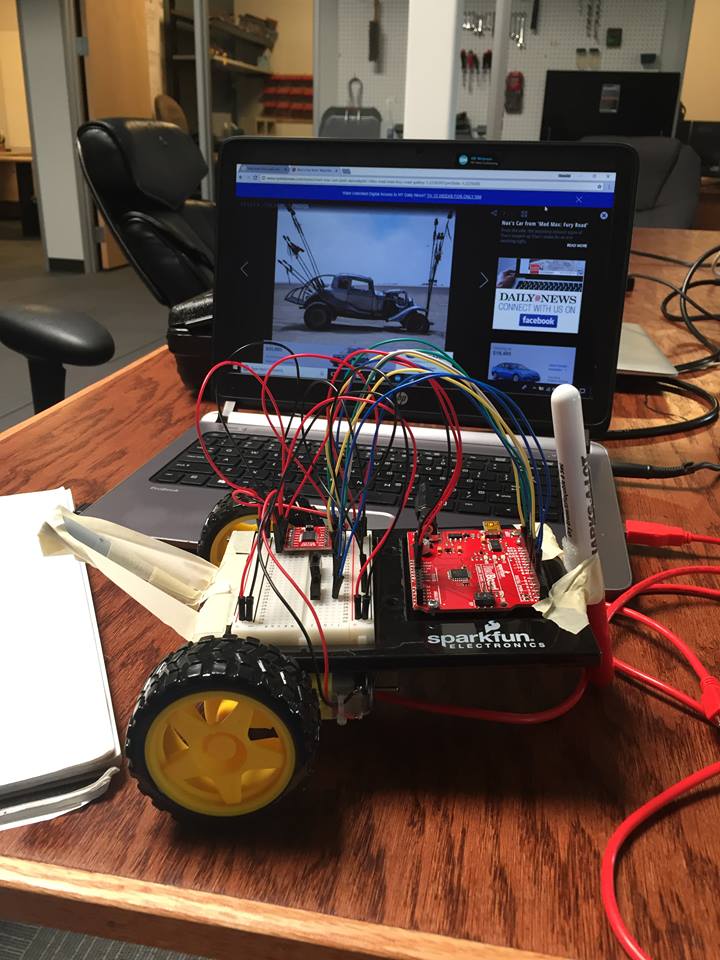 |
| Our DrawBot prototype, plus scribbles. | Spot the difference: the DrawBot vs. Nux's car from Mad Max: Fury Road |
Turntable Teardown
I acquired this beauty for $5 from the SparkFun garage sale, with the disclaimer that the volume knob was broken. Filled with all the unfettered optimism of someone who has no idea what they’re doing, I thought I could fix said knob using my highly-adept mechanical engineering skills (i.e. just jamming it in until it stuck there). After that didn’t work, I just decided to take it apart instead.
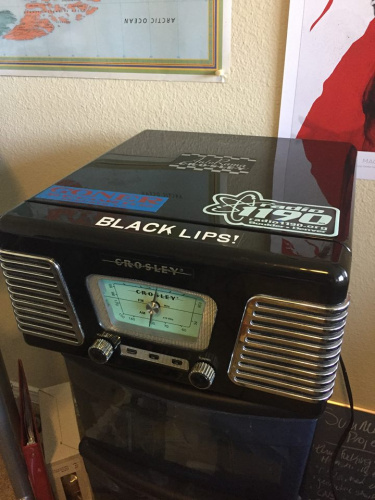 |
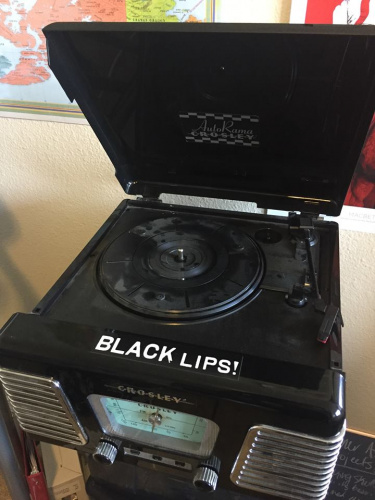 |
| The turntable | The turntable, now open |
Side rant: The funniest part of working on hands-on projects, for me, is that no matter how much theory you know, something can still sideline you in the simplest of ways. Have I taken an entire class on the mind-numbing intricacies of screws – mechanics, American and International standards and precision classes, various types, how to calculate the shear and bending stress surrounding them, manufacturing process, etc.? Yes. And yet, there was one dastardly screw that just barely escaped my trusty SparkFun screwdriver and made getting into this thing a 45-minute affair.
Just call me Magic Mike, because boy, did I strip that.
I managed to tear that puppy apart, and I was excited to see how all of it worked, but after taking one look at that circuit board my entire brain just made cricket noises. Toto, we’re not in voltage-resistor circuits anymore.
Never thought I'd say it, but I miss truss systems.
But that’s okay! After some quick Googling of components and how turntables work, I was able to figure it out.
Please excuse the highly professional use of MS Paint.
The circuit has two IC chips: a PT233 (an audio transformer), and an LA1824 (an FM/AM chip for circuits with manual tuning). While I am far from completely taking apart the turntable, it's a fair start and I'm excited to take apart the inner components further.
Ideas for a Final Project
It took a a good month to figure out what I wanted to do for my personal project. What I’ve noticed about idea generation for projects is that you quickly fall down a rabbit hole and end up with more ideas than you could possible have the time for.
3D Brain
Because I’m huge nerd for neuroscience, I decided on 3D printing a brain with clear PLA, then implanting LEDs in the different lobes to light up with different buttons. If I'm feeling extra frisky, I might even use some 3mm EL wire to demonstrate some basic sensory circuits. This, however, is still mostly in the idea phase: neural circuits are hard enough to viusalize in in two dimensions, let alone three. I did find a great project on Thingiverse that has the same sort of look I'm shooting for.
Walking Leggings
The wearables project is what I'm most excited about. I love biomechanics and motor control, and one of the most fascinating concepts is bipedal walking – everything from the overall inverse pendulum dynamics, to the muscle coordination, to the motor control (conscious and sub-conscious) required to maintain balance and movement amid various dynamic environments so you don't fall on your face fascinates me. So behold, the walking leggings! I’m trying to think of a cooler name.
Using muscle sensors and fiber optic fabric, I want to light up muscle groups, overlaid on a pair of leggings, that activate as your muscles do. Increased muscle activity corresponds to increased brightness – essentially, leggings that demonstrate this.
This project excites me not only because my inner research nerd is super excited, but also because I get to experiment and prototype with sewable electronics, something I've never done before! Speaking of which, if anyone has ever had experience sewing fiber optic fabric, I am desperately seeking advice. The fiber optic fabric requires a 5mm LED, which while kind of bulky for a wearable, I think will create a fun opportunity to play with enclosures and possibly 3D printing on fabric (I'm imaging a kind of 3D-printed thigh holster for the LEDs).
This week I’ll also be prototyping reusable electrodes that sew into a garment using this cool tutorial from Advancer Technologies.
My notes so far on how I want to make the leggings.
After I test how feasible the DIY conductive fabric electrodes are, I will actually plan out the full circuit I want to use (possibly an I2C protocol?), but that's next week's problem.
Lessons Learned
Even though I’m at various stages of completion in these projects, I’ve learned a lot:
Always start simple.
Whether it's drawing a rectangle with a little robot or protoyping a muscle sensor, starting simple enough to be able to make observations of what is and isn’t working helps with refining the product in the long term. For example, after prototyping an LED with the fiber optic fabric, I realized I needed much brighter LEDs and a much tighter enclosure if I wanted a more dramatic effect, and may even need to swap the fabric for cables instead.
Learn before you leap
No idea I've come up with has been completely unique. Learning about how other people have done similar projects has been invaluable in terms of feasibility, mistakes to avoid, and how to actually, well, actualize the idea.
Embrace the rabbit hole
Unless you’ve been living in a literal rabbit hole, I’m sure you’ve notice that SparkFun is full of people that make cool s**t. The hours I have spent scrolling through all the cool projects people have made - at SparkFun and on the internet - have opened my eyes to a whole new world of makers, hackers and hobbyists. I honestly can not believe some of the cool things people come up with. Whether it's chasing ideas or learning how drivers work for your RPI LCD screen, I can tell I've learned a lot when I can no longer see the heading titles on all the tabs I have open.
What the hell is engineering, anyway? (Alternatively: Call me a maple tree, because it’s about to get sappy.)
My definition of what an engineer is and does keeps changing. After three years of stressing over equations and textbooks about as exciting as tax code, I forgot that engineering could actually just be fun.
That there is a community of people just making cool things for the sake of making cool things (and sharing their process, no less) is incredibly inspiring, and really broadens the definition of engineering beyond the stuffy, erudite and exclusive image it can be. Being a year a way from the ever dreaded “real world,” I’m excited to see that engineering can take us anywhere from complex prosthetics that can initiate movement from muscle signals and give sensory feedback to the user, to sustainable water and sanitation systems that improve quality of life and health for impoverished communities, to something that just simply puts a smile on your face.
Not even to mention that SparkFun products can be used in any of those fields, providing ease-of-use and quality hardware to your various electronics projects. (Wink, wink, do I get my commission now?)
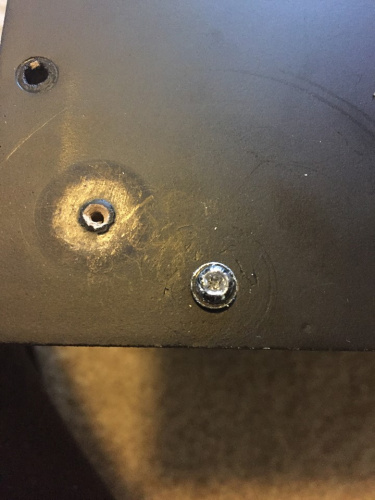
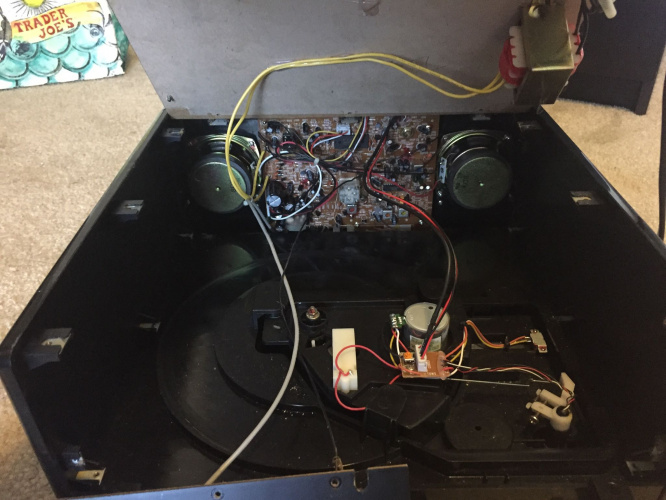

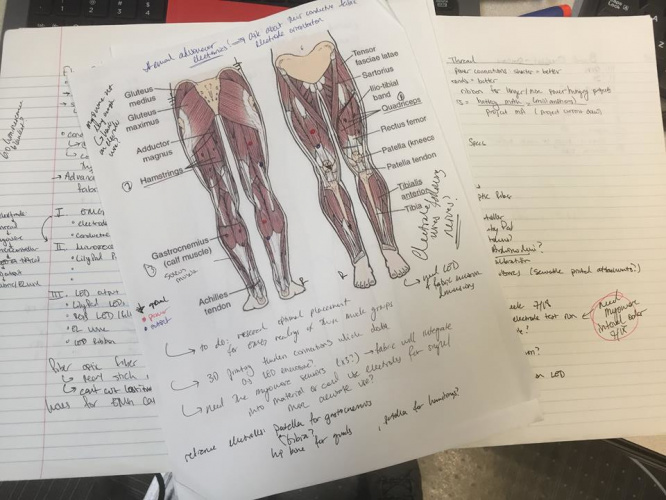






Thanks for the great post!
As a retired (or "recovering"?) Engineer, the definition I think is the best one is that an Engineer is a professional problem solver. We see problems that need solving -- the "problem" may be relatively minor or it may be something very major -- and we solve that problem. Often the "problem" is one that has been solved, but is in need of a better solution. (I often say that the "zeroth law of Engineering is that there is always a better way to do it!")
You mentioned using I2C. Learn from my mistakes: you always need pull-up resistors on the I2C bus. (Chased this one for several days!)
One last thought: you always need to keep in mind to realize when your project is "good enough" and it's time to move on to something else rather than trying to make your project "perfect" -- you can spend the rest of your life making something "perfect", only to have it become "obsolete" when you're within days of accomplishing "perfection".
Thank you!
I couldn't agree more with your definition of an engineer, and thanks for the great advice!
Enjoyed! Liked your reduction of the innards of turntable to modules. My students will not forgive you for exacerbating my enthusiasm for looking at things as collections of modules.
But! You've put Trade Secrets out in a public forum, where just anybody might see them" The Public is Not Meant To Know about the Black Magic bits inside the things we sell them.
Enjoyed! Liked your reduction of the innards of turntable to modules. My students will not forgive you for exacerbating my enthusiasm for looking at things as collections of modules.
But! You've put Trade Secrets out in a public forum, where just anybody might see them" The Public is Not Meant To Know about the Black Magic bits inside the things we sell them.
Congratulations on getting your hands dirty in the electronics world. I remember that for my first EE lab I was well ahead of my classmates just by knowing what a resistor actually looked like. And here's the best bit of advice you are going to get all day: screw pliers.
Thanks, I've already placed an order for a pair, haha